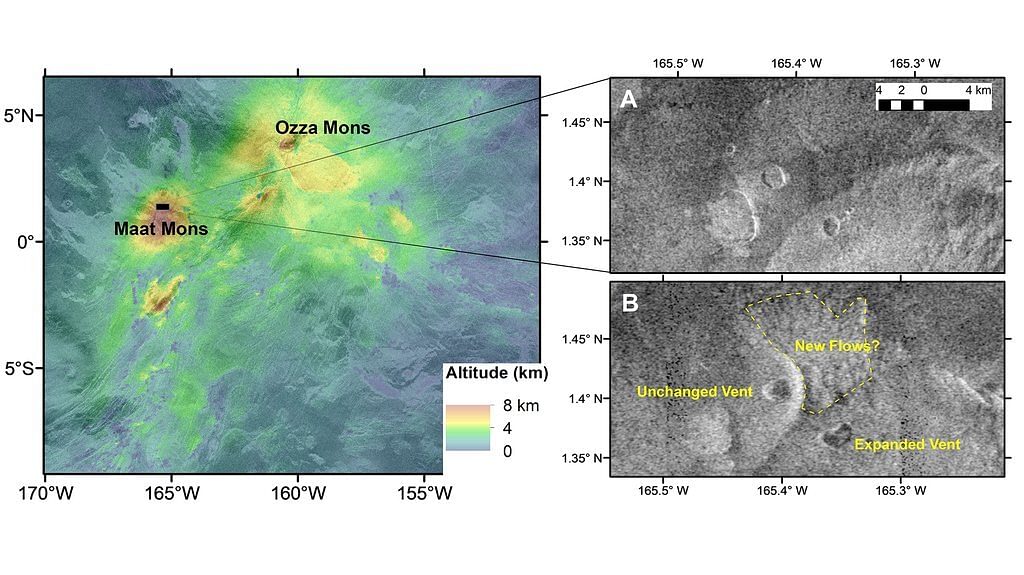
Scientists have discovered evidence of current volcanic activity on the surface of Venus, according to a report in the journal Science. The discovery was made after a detailed re-examination of archival radar images of Venus taken by NASA's Magellan spacecraft more than 30 years ago. The images revealed a volcanic vent which has clearly changed shape and increased in size over the space of less than a year. The findings could help to shed light on how the planet's interior can shape its crust, drive its evolution and affect habitability. The study's lead author, Robert Herrick, from the University of Alaska in Fairbanks, is a member of NASA's Venus Emissivity, Radio Science, INSA, Topography and Spectroscopy (VERITAS) mission, which will fly to Venus in about a decade to study the planet from the surface right through to its core.
The geological changes occurred in Altaregio, a highland region near Venus' equator, which hosts two of the planet's biggest volcanoes, Ozzermons and Matmons. The region has long been thought to be volcanically active, but up until now, there has been no direct evidence of any recent activity. The changes that Herrick found occurred in a volcanic vent associated with Mount Mons that appeared to have changed significantly in shape between February and October in 1991. In the February image, the vent appeared nearly circular, covering an area of less than 2.2 square kilometres. It had steep interior sides and showed clear signs of drained volcanic lava in exterior slopes, factors which hinted at past activity. However, in the Magellan radar images captured just eight months later, the same vent had nearly doubled in size and had become quite misshapen, and it also appeared to be filled to the brim with a lava lake. The authors concluded that only an eruption could have caused the changes they saw.
Venus is Earth's sister planet, formed under the same conditions, in the same part of the solar system, and out of the same materials. However, it is the closest thing to Hell in our solar system, with an average surface temperature of 462 degrees Celsius, hot enough to melt lead. Venus has a runaway greenhouse effect, and its surface is covered in metallic droplets of sulfuric acid. Its atmosphere is so dense that it gives the planet a surface pressure 92 times greater than the average sea-level surface pressure on Earth.
VERITAS, together with NASA's Deep Atmosphere Venus Investigation of Noble Gases (DAVINCI) mission, was selected in 2021 under NASA's Discovery Program as the agency's next missions to Venus. VERITAS will use state-of-the-art synthetic aperture radar to create three-dimensional global maps and a near-infrared spectrometer to figure out what the surface is made of. The spacecraft will also measure the planet's gravitational field in order to determine the structure of its interior. Together, these instruments will offer clues about the planet's past and present geological processes.
The findings of the study will help to further our understanding of Venus and its evolution. The study provides direct evidence of the planet's volcanic activity, which is a crucial factor in shaping the planet's surface and its habitability. The upcoming VERITAS mission will allow us to study the planet from the surface right through to its core, providing further insights into the processes that have shaped Venus into the planet we see today.
Hear the full story In SpaceTime with Stuart Gary S25E34
